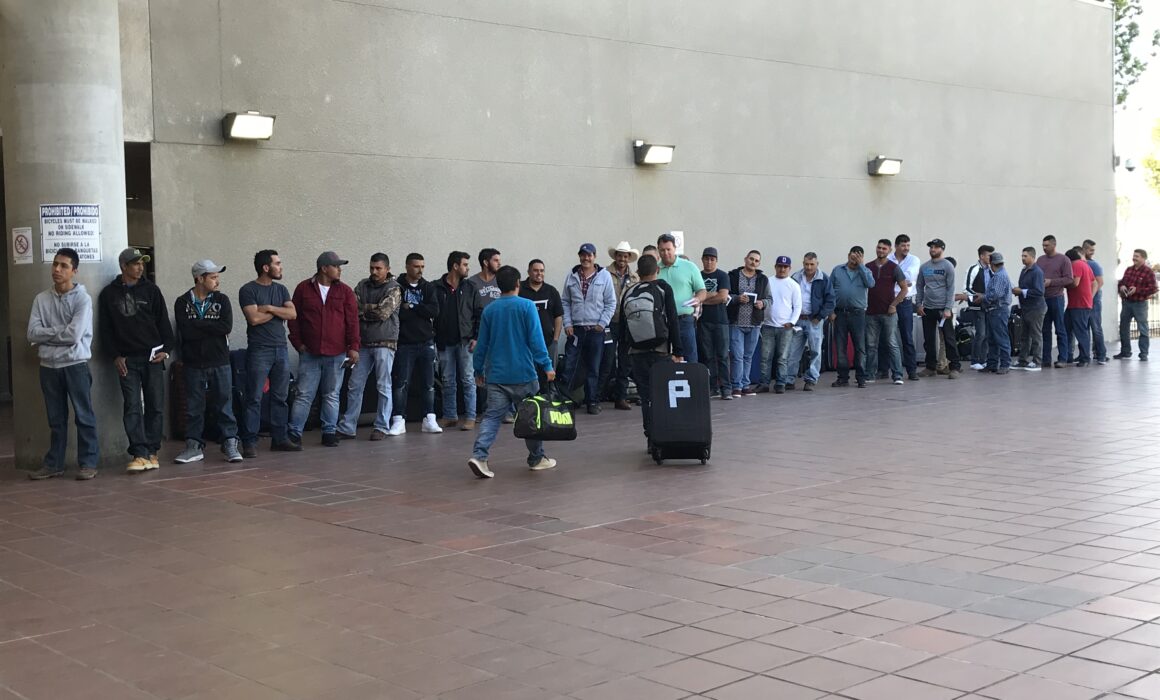Getting Ag Workers to Sonoma County
“The Good Stuff”
April 12, 2023
Virginie Boone
The Federal Guest Worker Visa, known more commonly as the H-2A, is a crucial lifeline to getting agricultural workers from countries around the world to farms across the United States. In California, the most important agricultural state in the country, this is particularly true. And in Sonoma County, our vibrant agricultural sector would have a hard time existing without this program.
The H-2A is a federal program that allows qualifying American employers to bring foreign nationals to the United States to fill temporary agricultural jobs. (H-2B is a similar program for temporary non-agricultural workers.)
To qualify, the job has to be temporary or seasonal and the employer has to demonstrate that there are not enough U.S. workers able, willing, qualified and available to do the job – not just American citizens, but other legally authorized workers and workers not authorized to work in the U.S.
The United States Department of Labor certifies the process but U.S. Citizenship and Immigration Services, State Department and Customs and Border Protection also monitor the program, which has 200 rules and regulations applicants must meet.
This includes posting such jobs on Department of Labor work sites as well as relevant newspaper classifieds across the region. It is also incumbent on those employing H-2A workers to prove that the presence of those workers will not adversely affect the wages and working conditions of similarly employed American workers.
Generally an H-2A classification lasts for a period of time that has been authorized as necessary for the temporary labor to take place (typically 6-10 months) and can be extended in increments of up to 1 year, with a three-year maximum.
Spouses and unmarried children under 21 years old can seek admission under the H-4 nonimmigrant classification but are not eligible for employment in the U.S. while they are here.
Employers have to meet a number of requirements in order to participate. H-2A workers in California as of January 1, 2023, are paid $18.65/hour, which is the highest hourly wage rate in the United States. For workers engaged in general vineyard work in wine grapes, a prevailing wage of $19.65 was set for counties in the North Coast, including Sonoma County.
Employers must provide free housing which must be inspected and approved by the government. The housing can be onerous to permit and expensive to build. In addition, transportation for the H-2A employees must be provided by employers both to the region as well as within the region once here.
It is estimated that H-2A workers account for nearly 10% of average employment in crop agriculture in the U.S. and 3% of employment in California crops. California is one of six states that typically has more than 10,000 H-2A jobs certified on an annual basis (2019 data).
The program started out as H-2 in 1952, part of the Immigration and Nationality Act, as a way to recruit workers after World War II. In those years there were only about 10,000 total agricultural jobs filled by H-2 workers every year, mostly in Florida for sugarcane.
This was well after the Bracero program had been started in 1942 to recruit mostly Mexican guest workers, a much larger effort that brought in an average of 450,000 workers a year by the mid 1950s, according to a research article in California Agriculture by Philip L. Martin of UC Davis and Zachariah Rutledge of Arizona State University.
The Bracero program ended in 1964, and the H-2 process grew, centered for decades around Florida sugarcane and the apple industry in the northeast, though remained small initially as much of Florida’s agriculture became mechanized.
It became the H-2A in 1986, allowing American farmers who anticipated a shortage of workers to fill seasonal jobs. Since 2000 it has quadrupled in size, with California quickly becoming one of the top 10 H-2A states with, by 2020, more than 25,000 jobs certified to be filled with H-2A workers.
Nine counties in California had more than 1,000 certified H-2A jobs each, with the top five being Monterey (6,394), Santa Barbara (2,668), San Luis Obispo, Ventura and Fresno (each more than 1,500).
“The H-2A program is a win-win for the workforce and employers,” commented Karissa Kruse of the Sonoma County Winegrowers. After experiencing the process firsthand at the border for several years, she added, “the crews show up excited for the opportunity to come to the U.S. and work legally and then return home to their families and friends. They are not looking to become permanent residents. Through working on our local vineyards, these men earn in one day what they would earn in a week plus in Mexico, giving them the means to build homes, start their own farms and support their families in their home regions. As the labor market continues to be tight in the U.S., the H-2A workforce will remain an important and valued part of our ag community.”
The North Bay Business Journal reported in 2017 that in Sonoma County, local businesses had requested 291 workers through the H-2A program, an uptick reflecting a tight labor market.
“It’s the only option. There is no avenue to take to get labor to work in the fields,” said Duff Bevill of Bevill Vineyard Management of Healdsburg at the time, which brought in 24 workers from Mexico that year. “Seven or eight years ago, we would have people coming to our office to apply for jobs and we would hire them.”
Every year, grapegrowers like Bevill and Steve Dutton have gone down to the U.S.-Mexico border to pick up H-2A workers that will live and work across their ranches through the season. Many grapegrowers across Sonoma County rely on this work force to keep their operations viable, while grapes are not even in the top 10 American crops that benefit from H-2A (those would be berries and tobacco).
The North Bay Business Journal added in its 2017 story that “the North Coast has tended to attract a much less migrant agricultural workforce. The vineyard work attracts higher wages because the region’s premium wine grapes are one of the most profitable crops in the state… those workers, in turn, have stayed in the community.”
A survey by Fundación de la Voz de los Viñedos (formerly Sonoma County Grape Growers Foundation) in 2021 showed the local industry employed 6,139 full-time workers, a number supplemented by 670 seasonal workers.


